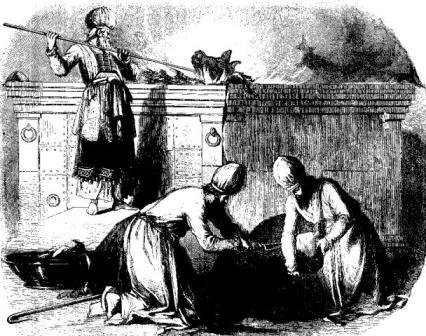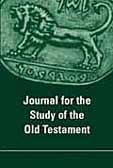Recently, I had an email back-and-forth with my friend who was wondering about the bloody nature of Old Testament sacrifice.
The conversation begins with his inquiry:
I’ve been trying to learn details of how OT Temple sacrifices were actually done. I’ve found articles that distinguish the different types of sacrifices and describe what they are but nothing that gives a concrete picture of how they were done. On the principle that God taught the Jews how to offer sacrifice so they would be prepared to understand Jesus’ sacrifice of himself to atone for sin I’d like to learn more about what a First Century Jew would have seen and experienced at the Temple.
For example, commentaries and articles explain that a holocaust sacrifice meant burning up the animal completely. How did they actually burn up a full-grown bull completely? Seems like it would take a very large fire and take hours to fully reduce the carcass to ashes. If they offered ten bulls and 50 goats as a holocaust how did they do it? Seems like it would take all day and use a lot of wood. (The Romans are usually blamed for the deforestation of the region around Jerusalem. Was it actually the priests?)
Communion or peace sacrifices involved giving some of the meat of the animal to the worshipper that provided the animal to be eaten as a sacred meal. How was that done? Did the priest butcher the animal on the Temple Mount in front of the people, skin the animal and then carve it up into various pieces some of which were given to the worshipper to cook and eat. Where did the worshipper who brought a sheep from Nazareth go to cook and eat his part of the animal. Was eating their share of the animal a festive meal like Christmas dinner or a religious rite like the Passover?
If the apostles had understood what Jesus foretold they would have expected that Jesus was going to be the sacrificial victim to atone for the sins of the world and that they would eat of his flesh and drink his blood just as one did with temple sacrifices. What images and experiences would have been in their minds? When they later realized the full truth of what Jesus did and what it meant to eat his body and drink his blood how would that have affected them given their long exposure to Temple sacrifice?
Are there any books I could read on the subject? Any good articles or lectures?
My initial response, I’ll admit, did not answer every question, but here it is:
Your question is very important, and, unfortunately understudied. My sense is that Protestants, who make up the bulk of biblical scholars, care little for questions of liturgical procedure. These minutia are more interesting to Catholics, Mormons and Jews. One other problem is that many biblical scholars regard the ritual texts of the OT as mere fantasy and believe that they do not describe a real cult that actually existed.
A handful of scholars address the questions:
- Haran, M. 1978. Temples and Temple-Service in Ancient Israel. Oxford. (very expensive! A collection of the author’s earlier articles)
- Jacob Milgrom – a Jewish scholar who wrote multiple commentaries on Leviticus
- Jonathan Greer – an evangelical biblical archaeologist – https://www.cornerstone.edu/staff/jonathan-greer/
- Gary Anderson (at Notre Dame) has written quite a bit about OT sacrifice.
- G.K. Beale, The Temple and the Church’s Mission: A Biblical Theology of the Dwelling Place of God (an evangelical NT scholar, focuses on temple symbolism)
- You might check out the work of the evangelical Leviticus scholar, Jay Sklar
- Also of interest might be The Great High Priest: The Temple Roots of Christian Liturgy by Margaret Barker.
Since the biblical texts are not specific enough, it only later in the Qumran material (Jubilees, Temple Scroll) and the rabbinic sources (esp. fifth division of the Mishnah, Kodashim: https://en.wikipedia.org/wiki/Kodashim ; Available at Sefaria – https://www.sefaria.org/Mishnah_Zevachim.1?lang=bi ) that the details of the ceremonies are fleshed out. Again, for the rabbinic material, most scholars regard their comments as recalling an imagined past rather than actually describing real rituals. For some of that critique, turn here: https://www.amazon.com/Memory-Temple-Making-Rabbis-Divinations/dp/0812244575
The classic text that tries to answer your questions is Alfred Edersheim’s The Temple—Its Ministry and Services (https://www.ccel.org/ccel/edersheim/temple.html ), but his work in general has been rejected as being uncritically and sometimes inaccurately reliant on rabbinic sources. However, he might be one of the best biblical scholar-authors at inspiring the imagination and filling out the picture.
My conversation partner later supplied a great quote about bloody sacrifice in the time of Julian the Apostate, which illustrates the gruesome nature of sacrifices:
Ammianus writes that “he drenched the altars with the blood of too great a number of victims, at time sacrificing a hundred bulls at once . . . he was called a slaughterer rather than a priest by many . . . and though he took offense at this, he controlled his feelings and continued to celebrate the festivals.” Yet even despite such a spectacle as this, the ordinary people stayed home. “In the temples, after he had spent a long time with his tunic tucked up and sweating like a slave at quartering his victims, he would suddenly realize that almost all the spectators had quietly walked away.” (Bennett, Rod. The Apostasy That Wasn’t: The Extraordinary Story of the Unbreakable Early Church (Kindle Locations 3670-3674). Catholic Answers Press. Kindle Edition.)
I was able to offer up a few things in response:
- That many scholars believe the Temple in Jerusalem had a drainage system to evacuate all the animal blood from the sanctuary
- That you can actually find a handful of videos of Jewish (and Samaritan) animal sacrifice on YouTube:
https://www.youtube.com/watch?v=5kgbRusmqjshttps://www.youtube.com/watch?v=G-KPnmSj_TA
Conclusion
Here are a handful of takeaways from this wide-ranging conversation worth thinking about:
- Old Covenant animal sacrifice was technical and bloody. To perform it properly involved a lot of logistical challenges like large amounts of fire wood, sufficient numbers of priests, caring for animals before they were sacrificed and disposing of their blood and remains properly.
- Early Christian perceptions of Jesus as sacrificial lamb would be shaped by Jewish experience of animal sacrifice at the Temple. The shocking, violent nature of his death could be interpreted in light of the public slaughter and sacrifice of animals at the Temple.
- While many scholars disregard the OT sacrificial cult as a fantasy or as unimportant, a serious consideration of its technical execution can help bring together insights from archaeology (as in the work of Jonathan Greer), liturgy and biblical theology. In fact, recently NT scholars have started to see “cultic language” all over the New Testament literature, emphasizing the centrality of Temple-worship in the consciousness of the earliest Christians.


